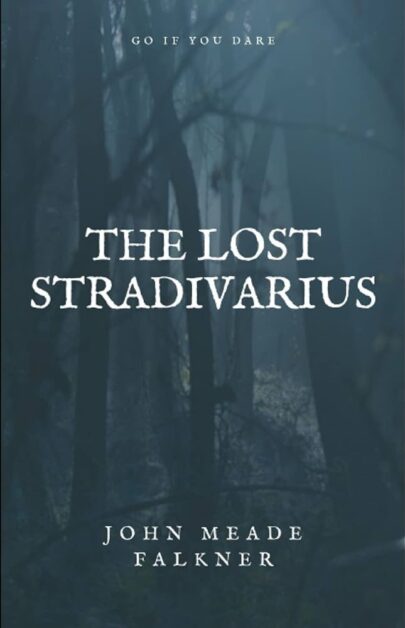 By JOHN MEADE FALKNER (D. Appleton and Company; 1895)
By JOHN MEADE FALKNER (D. Appleton and Company; 1895)
Not quite a lost classic of the macabre, but certainly a worthwhile one, THE LOST STRADIVARIUS was an early entry in the music-based horror fiction trope that included Algernon Blackwood’s “Human Chord” and H.P. Lovecraft’s “Music of Erich Zann.” The author was John Meade Falkner (1858–1932), an English businessman who chaired a successful arms manufacturing company during WWI, and in his earlier years he published three novels, including the popular TREASURE ISLAND knock-off MOONFLEET (1898) and the thriller THE NEBULY COAT (1903). THE LOST STRADIVARIUS preceded both, and demonstrated a talent for the spooky that never reached its full potential.
The novel has many if not all the trappings of Victorian era horror fiction. Said trappings include an aristocratic milieu (you won’t find too many poor people in these stories) and a borderline-epistolary narrative related entirely through the viewpoints of secondary characters.
The story is told by Sophia Maltravers, the protagonist’s sister, in the form of an extended letter to her nephew (because “I feel it is better that you should hear the truth from me than garbled stories from others who did not love your father as I did”). Her brother is John Maltravers, who begins the book as a young musician attending Oxford.
One night John finds his attention drawn to a suite called “L’Areopagita,” which he plays on violin, and hears odd sounds emanating from a recently purchased wicker chair. This phenomenon repeats itself every time John plays the suite, until one morning when during an especially impassioned rendition he spies a strange man seated in the chair. This leads to the finding of a hidden cupboard that contains an antique violin, a Stradivarius dated 1704.
Upon exploring her brother’s place of lodging Sophia happens upon a painting of its previous tenant: one Adrian Temple, a music lover with an extremely shady history (fact: characters in horror stories named Adrian are usually always trouble). As for John, he suffers through a period of illness, after which he undergoes a dramatic personality shift that seems to have something to do with the Stradivarius, which of course belonged to Temple.
The tale is spun with admirable focus (in contrast to most Victorian novelists, who had a tendency to meander) and a music-based milieu that rings true. The author’s grasp of the macabre is likewise quite strong, with at least two impressive horror set-pieces and a potent sense of teasing ambiguity. Offsetting those things is the fact that the story is achingly predictable and, unless you happen to be a well-to-do music student, hard to relate to.
